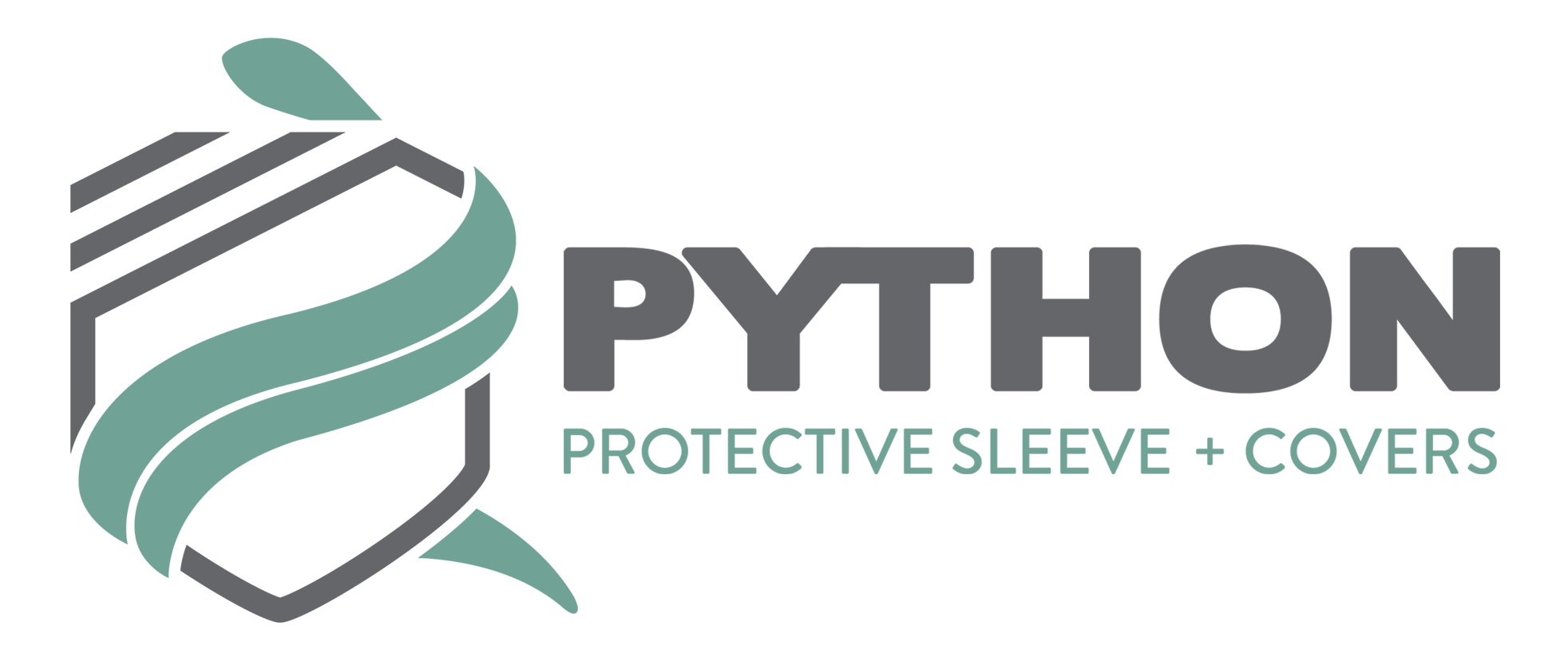Learning Center
.png?width=464&height=196&name=Python%20Protective%20Sleeve%20and%20Covers%20PANTONE-01%20HORIZONTAL%20(1).png)
The Python learning center is your one-stop shop for all information pertaining to protective sleeves and covers for hydraulic hoses, spray foam applications, heavy machinery, and more. From our video library and blog resources to how-to and installation guides, this page provides detailed information and answers some of the most common questions we hear.
Python Protective Coverings provides today's leading manufacturers with revolutionary safety products. Our manufacturing process includes full-service ideation, design, prototyping, testing, and mass production. With any inquiries, to request a sample, or if you have a question that isn't answered below, contact us and a member of our talented team will be happy to assist.
Common FAQS
-
What causes your hose to fail?
Hydraulic hose assemblies commonly operate in rough and demanding conditions. Thus, a hose is often exposed to flying debris in mobile equipment and the likes of weld spatter and hot metal chips—or even the errant lift truck—in industrial settings. In addition, hoses subjected to continuous movement and machine vibration can rub against each other and adjacent equipment. That can erode hose covers, expose the reinforcement to dirt and moisture, and lead to quick failure.
-
What is the difference between circumference and diameter?
Circumference and diameter both refer to specific parts of a circle. The diameter is the distance across the circle at its widest point, passing through the center. The circumference is the perimeter, or distance around the circle. The circumference of a circle is calculated by using the diameter in an equation: C = D x 3.14
-
What is the difference between Inner Diameter (I.D.) And Outer Diameter (O.D.)?
The Inside Diameter is the inside measurement from one inside edge to the other inside edge on the interior of a hose, tube, pipe or other object. It is often abbreviated as I.D.
The Outside Diameter is the outside measurement from one outer edge to the other outer edge of a hose, tube, pipe, or other object. It is often abbreviated as O.D.
.
-
What is ASTM D6770?
The ASTM D6770 refers to the standard test method for abrasion resistance of textile webbing using a hex bar abrasion tester. The resistance is expressed as a percentage of retained break strength.
-
What is MSHA?
The U.S. Department of Labor's Mine Safety and Health Administration (MSHA ) works to prevent death, illness, and injury from mining and promote safe and healthful workplaces for U.S. miners. When a product is “MSHA approved”, is has received a formal document issued by MSHA which states that the product has met the applicable requirements.
-
How do you cut a hose sleeve?
Cutting your protective sleeve is simple! You can use a sharp high-quality scissors, knife, rotary cutter or a hot knife.
-
How do I size a sleeve properly to fit my hose application?
Determine hose OD or hose bundle OD. If needed find the circumference of the hose or bundle of hoses, then calculate diameter. Also assess if the hose or hoses have bends or movement during application as the sleeve will need to be over sized to accommodate. Sizing a sleeve too tight to the hose or bundle of hoses will hinder natural movement of the hose within the sleeve, causing premature hose failure due to possible abrasion. Typically size the sleeve 1 - 2 sizes bigger than your current hose or hose bundle OD.
-
What do hose dash sizes mean when sizing sleeve to your application?
A dash size refers to an ID of the hydraulic hose or fitting in 1/16” increments. Once ID of hose is determined, one can measure or find OD of hose (may vary depending on rating of hose pressure). Once OD of hose or hose bundle is determined you can size your sleeve 1-2 sizes bigger, also dependent on bends or movement of hose or hoses during application.
-
What is the danger of a hydraulic hose injection?
A hydraulic fluid injection is perhaps the most dangerous injury that can result from a hydraulic hose failure. One reason is that it can appear insignificant at the beginning so it often gets dismissed as not urgent. Another reason is that injected hydraulic oils are highly toxic - so in addition to a physical cut or stab, they poison you.
The longer the period of time before treatment, the more risk you are taking on. At first, injections may feel like a bee sting or wire prick and the entry area may look like just a pin prick. The size of the entry wound is a poor indicator of the seriousness of the injury. What looks like a simple puncture wound is in fact life threatening. The area around the injury typically turns red and swells within a couple of hours. Throbbing and numbness follow. If left untreated, the injury can lead to amputation and even death.
Catalogs & Installation Manuals
Python offers a full product catalog so you can find the product you are looking for. This page also has installation manuals for our systems and components.
From the Diamondback Pro to a Sidewinder sleeve, we have an installation manual to help you if you run into an issue.
Weld Armor Cable and Lead Wrap - New Product Winter 2025
How to Reduce Downtime & Maintenance with Hydraulic Hose Protectors
This Product will Prevent Your Propane Regulator from Freezing
How to Practice Propane Tank Safety All Year-Round
Keep the Heat Flowing: Why Propane Tank Warmers Matter
Not only does Ready Wrap provide the protection you rely on in sub-zero temps, it also acts like a can cooler in the summer months. Best part, wrapped up with 2 guys in 20 minutes; elbows and all.
We have been finding a 10% gain during the cold weather on our material! We have also found that we aren’t pushing our machines as hard as we did before which is ALWAYS good!...
Not only does Ready Wrap provide the protection you rely on in sub-zero temps, it also acts like a can cooler in the summer months. Best part, wrapped up with 2 guys in 20 minutes; elbows and all.
We have been finding a 10% gain during the cold weather on our material! We have also found that we aren’t pushing our machines as hard as we did before which is ALWAYS good!...




